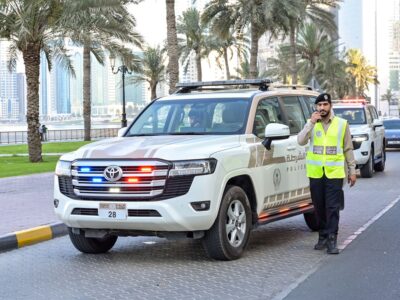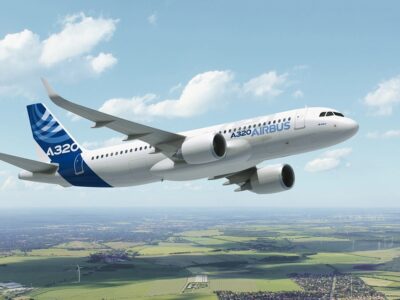Akbar Al Baker’s excitement was evident for all to see. The chief executive of Qatar Airways had flown more than a dozen journalists to Boeing’s Seattle headquarters in November to witness the carrier take delivery of its first Dreamliner 787 and he wanted the world to see just what his airline could offer its passengers.
“I just got a new toy, so I am very happy. This is a moment to cherish,” an ecstatic Al Baker told Arabian Business at the official unveiling ceremony. “Today’s delivery marks the beginning of a new chapter in Boeing’s partnership with Qatar Airways, which is based on a mutual commitment to excellence,” he added.
The inaugural flight back to Doha was greeted with great fanfare with a red carpet and VIP reception. But less than two months later the outlook is far from rosy. A little over a week ago the airline grounded its five-strong fleet of 787s following a string of safety issues at other carriers, including an electrical fire that required an emergency landing and two fuel leaks. Airlines across the world, from India to the US, Europe and Ethiopia, were forced to take their fleets out of action, an embarrassing fate for a plane so eagerly anticipated by both the aviation industry and passengers alike.
“This is easily the worst product launch for any Boeing jet,” says Richard Aboulafia, vice president of analysis at Virginia-based Teal Group Corporation.
“To see anything this bad, you need to go back to Douglas’s DC-10, but that plane was grounded after hundreds were killed, while here we’re only talking about one injury-free flight evacuation. Clearly, this is a much safer plane and we have a much safer air travel system today too, but it is deeply embarrassing and very expensive for Boeing,” he adds.
As its name suggests, Boeing’s Dreamliner is more than just another plane. The Seattle-based planemaker billed the long-awaited 787 as a leap forward in aircraft design and a symbol of the aviation industry’s greener future. The use of new battery technology promised to burn 20 percent less fuel than rival planes using its ultra-modern part-composite airframe makes the aircraft much lighter, potentially longer lasting, and cheaper to fly.
The decision last week to ground the plane is the latest in a series of setbacks, which have included cost overruns and years of delays. When the plane entered service in 2011 it was already more than three years late after Boeing struggled with the leap in technology.
The latest trouble occurred when pilots for Japan’s All Nippon Airways were forced to make an emergency landing after receiving a warning of battery problems. An investigation later found that flammable liquid had leaked from the lithium-ion battery, which is below and slightly behind the cockpit. That problem was followed by a battery fire onboard a Japan Airlines plane. Both incidents involved the battery, raising concerns that the jet’s electrical problems could be far worse than originally believed.
The 787 is the first plane to make extensive use of lithium-ion batteries, which have in the past been cause for concern due to the potential to catch fire. The FAA has given the batteries extra scrutiny and issued a special rule for their use in the Dreamliner but Boeing will need to act quickly to determine if the fault is with the battery itself or the wiring. In the meantime, what does this mean for the seven Middle Eastern airlines that have placed bets on the aircraft’s technology?
Article continued on next page
Like airlines across the world, regional carriers were quick to take advantage of Boeing’s newest plane, placing orders for a combined 117 aircraft with a list price of $24.2bn. Abu Dhabi-based Etihad Airways is so far the largest customer in the Middle East with 41 aircraft on order, followed closely by Qatar Airways with 30 on order and options for a further 30. Saudi Arabian Airlines, Oman Air, Gulf Air, Royal Jordanian and Iraqi Airways have also placed orders for the aircraft, which has a list price of $207m.
As the only regional carrier to take delivery of the Dreamliner to date, Qatar Airways has so far been the only Middle East airline affected by the technical glitches. While the Doha-based airline has a large enough fleet to be able to avoid any disruption, much of its — and others’ — future will rely on how long the aircraft remains grounded.
“At present, it’s only really Qatar Airways that will bear the brunt of any impact. With deliveries halted, the relative impact will be limited although this will of course be paced by how long the US Federal Aviation Administration and other agencies decide to keep the 787 fleet grounded,” says Saj Ahmad, chief analyst at StrategicAero Research.
Boeing has said it is throwing all of its resources at the problem but has halted deliveries until the battery concerns are resolved. While there has been no indication as to how long the investigation will take, a report last week by the National Transportation Safety Board ruling out excessive voltage as the cause of a battery fire, which contradicts preliminary findings from Japanese authorities, could delay the return of flights.
Airlines, already frustrated at delays due to new production techniques, are likely to seek compensation. Even before he was forced to ground the 787 fleet, Qatar Airways boss Al Baker had said that grounding planes would result in Boeing having “to get their cheque book out”.
“Undoubtedly there will be behind the scenes claims for late deliveries, grounded flights and lost revenue,” adds John Strickland, a director at JLS Consulting.
Compensation and embarrassment aside, observers agree that regional airlines are unlikely to reassess their order books in light of the glitches. Airlines view their fleet as investments spread across decades and the promise of significantly reduced fuel costs coupled with improved passenger experience, means the Dreamliner’s fate remains closely linked to their own. As such, carriers around the world have been quick to rally behind Boeing.
Days before Qatar Airways was forced to ground its fleet, Al Baker insisted the jet is simply experiencing “teething problems”. Airlines including United Continental Holdings — the only US airline currently flying the 787 — and Boeing have little doubt that the Dreamliner will fly again. “It will be a great airplane but we are going to have to work through these issues with all of the authorities,” says Jeff Johnson, president of Boeing Middle East.
Crucially, the Dreamliner is not the first aircraft to experience technical difficulties and survive. Rival Airbus managed to recover confidence and orders in spite of wing cracks, which continue to plague its A380 superjumbo. Nor is it the first to be grounded. The De Havilland Comet, the first commercial jet to launch in 1952, was temporarily grounded following a series of fatal crashes but its variants later went on to deliver nearly 50 years of service.
Article continued on next page
“This may be more extreme due to complex mix of new materials, systems and manufacturing processes but there were problems for example with the Airbus A320 in its early days as with the Boeing 747 and DC-10, all of which went on to become safe and commercially successful aircraft,” says Strickland.
While it may not be the first to experience technical difficulties the financial impact could be huge. Boeing shares are already down while financial risks to the company could include compensation, design and manufacturing expenses and delivery disruptions, according to Howard Rubel, a Jefferies Group analyst.
In a note to investors, Rubel estimated that reworking the jet to fix electrical problems could cost between $250m and $625m but emphasised that little is still known about what it will take to fix the problem and that Boeing’s suppliers may bear some of that cost. Shares in Meggitt, whose subsidiary Securaplane makes part of the charger used for the Dreamliner’s battery, fell 7.8 pence ($0.12) to 429.4 pence last week.
Despite rallying behind the Dreamliner, airlines may be tempted to switch their focus to the A350, Airbus’ answer to the 787. The aircraft is already the model of choice for Emirates Airline, which currently has 120 A350s on order and no 787s. Like the Dreamliner, the A350 is built using composite materials and lithium-ion batteries but Airbus has been quick to stand by its planes, insisting it will not encounter the same problems. “We are confident our design is robust” and “don’t see any reason to change,” Airbus chief executive Fabrice Bregier told reporters shortly after announcing a record year for the planemaker.
But the A350 isn’t scheduled for delivery until 2014, with all of the early delivery slots taken and the long lead time between ordering an aircraft and delivery coupled with the financial implications means regional airlines are unlikely to shift their focus to rival Airbus.
“I can’t see any 787 customers in the Middle East suddenly cancelling orders — what would they replace them with at such short notice? The 777 line is packed out until 2016 while the smaller and older A330 family is also heavily sold out so slots at Boeing and Airbus would be nigh on impossible to procure today,” says Ahmad.
“The aircraft promises so much in terms of fuel efficiency and range and the airlines need this. Until Airbus’ A350 flies, there is no alternative, order backlogs are also lengthy so ability to switch is pretty well non-existent,” adds Strickland.
How long Boeing’s customers are willing to stick by their dream jet depends on how quickly the planemaker can restore the 787’s battered confidence.








